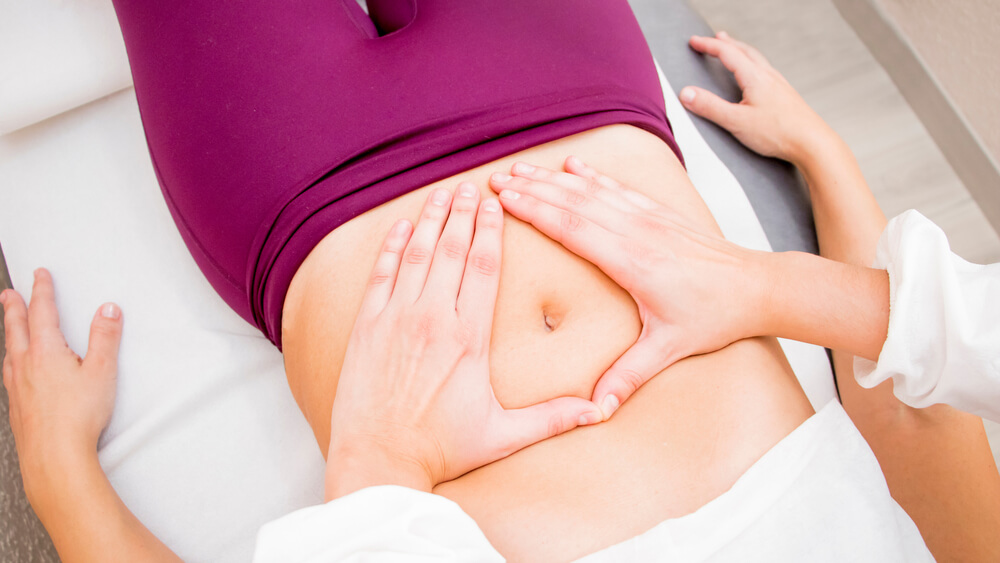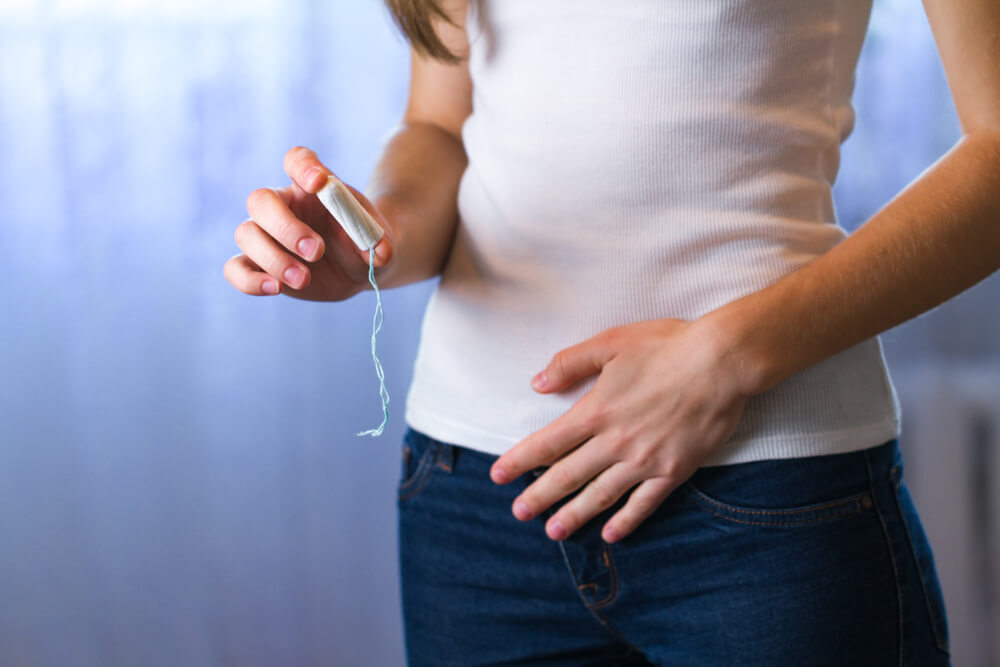
Muscle cramps can be excruciating and are caused by a variety of different reasons such as stress, exercise, dehydration, or other reasons. A muscle spasm is essentially an involuntary contraction or movement and can happen to any muscle of the body.
Pelvic floor spasms, or vaginal muscle spasms,as some refer to them as, can be fairly common and females can sometimes experience a condition called vaginismus, which can make various activities and life necessities extremely painful and inconvenient. In the following content, we will discuss in greater detail vaginismus, the causes, and how they are treated.
What and Where Are Pelvic Floor Muscles?
Pelvic floor muscles are an essential muscle group in women that help support various organs and their functions. Located in the bottom of the pelvis, these muscles and other types of tissues span the gap between the tailbone and the pubic bone. The organs that are supported by this hammock-like muscle wall include the bladder, uterus, and the colon, while the urine tube, vaginal canal, and the rectum pass through this muscle wall.
Knowing the proper muscles that are engaged can be valuable when trying to describe pain or other symptoms to a doctor. It can be difficult to explain which muscles make up the pelvic diaphragm but there is a way for a woman to there are two main ways women can feel the muscles that are involved, such as:
- Sitting or lying down on the ground, relax the thighs, buttocks, and stomach muscles.
- Squeeze the muscle as if you were trying to prevent passing gas, but make sure the buttocks are not being tightened.
- Another way to feel what muscles are involved is to stop the urine stream. That squeezing will feel like your pelvis is being lifted.
When not functioning correctly, these muscles are subject to pelvic floor dysfunction. Stress (especially physical), dehydration, or injury can cause these spasms in women. A variety of symptoms and difficulties can arise from these spasms, including:
- Urinary issues including frequent urges to urinate and painful urination
- Bowel movement difficulties like constipation and strains on the bowels
- Lower back tightness, discomfort or pain
- Genital or rectal pain or pressure
- Painful sexual intercourse for women
What Does a Pelvic Floor Spasm Feel Like?
The symptoms above are what women describe the experience during pelvic floor muscle spasms. During the spasms, similar to other muscles that cramp, a pelvic diaphragm spasm can feel like a sharp, strong contraction of the muscle that results in a “balled-up” feeling of the tissue similar to a knot that can develop in overworked muscles (i.e., back and neck).
Others have described it as a “heavy” feeling in the pelvic area or like a charley horse. The muscles that are commonly affected by these spasms are the pubococcygeus (PC) muscle group. These muscles are also involved in intercourse, especially during an orgasm.

What is Vaginismus?
This condition is characterized by the involuntary tightening of the pelvic diaphragm muscles during sexual intercourse, gynecological appointments when a speculum is used or using tampons during menstruation. Vaginismus is sometimes referred to as pelvic diaphragm myalgia (muscle soreness); however, it is directly related to the muscle contraction that occurs when an object is inserted into the vagina.
Women of all ages can be affected by vaginismus and there are four types: primary, secondary, global, and situational. Vaginismus can be caused by a range of both physical and emotional events that range from urinary tract infections to anxiety or sexual assault.
Primary
This type of vaginismus is a condition in which pain can be present for the lifetime and is usually discovered during the ages of sexual maturity, either with menstruation or sexual intercourse. Any time that the woman tries to have sexual intercourse, undergo a gynecological exam, or even use tampons while on her period pain will be present and the inability to function normally will be severely hindered.
It is generally experienced by women when they first try to have sexual intercourse and their partners describe it as “hitting a wall” at the entrance to the vagina. Pain, muscle contraction/spasm and the brief stoppage of breathing can happen during situations that trigger the primary vaginismus response. While rare, it is estimated that anywhere between 6-17% of women experience primary vaginismus.
Secondary
After a woman has experienced normal sexual function, secondary vaginismus can develop. This type was not always present but can occur at any age. This type is usually related or caused by a specific event or condition such as an infection, menopause, a traumatic physical or sexual incident, certain medical conditions, relationship issues, surgery or even childbirth.
If the reaction is caused by an underlying medical condition that has been corrected, the physical reaction of vaginismus can still persist due to the body being conditioned to respond in a certain defensive way. While this can occur at any age, most women who experience secondary vaginismus are in the postmenopausal phase of their lives and it can be related to atrophic vaginitis.
Global & Situational
If a woman is diagnosed with global vaginismus then the response is always present and can be triggered by any object, whether it be a tampon, gynecological speculum or a partner’s penis. Situational vaginismus is more likely to be triggered by mental cues because the response is situationally driven. Some women do not experience it when using tampons or gynecological exams but do when they try to have sexual intercourse.
Symptoms
Depending on the individual and the severity of the condition, vaginismus can present a variety of symptoms that include:
- Difficulty with penetration or even impossible to penetrate into the vaginal opening
- Pain experienced when inserting a tampon
- Pain experienced when undergoing a gynecological examination
- Dyspareunia, which is pain, like muscle tightness, burning, or aching that is experienced during sexual intercourse and in the situation of vaginismus, the pain occurs when penetration is tried.

Treatment Options for Pelvic Floor Spasms and Vaginismus
There are various treatments that can help with pelvic diaphragm spasms and vaginismus, but the specific treatment will ultimately depend on the underlying cause. Many women are embarrassed, especially when it impacts their relationships or sex lives, and sometimes will refrain from seeking medical help. However, most, if not all situations, can be at least improved upon with the help of the various treatment methods.
Unlike the information that is available online when you search “how to treat muscle spasms,” treating pelvic diaphragm spasms is much different. After a thorough medical history is taken and a pelvic exam is conducted, your doctor will want to rule out any possible underlying conditions such as infections. Vaginismus is typically treated using a combination of the following treatments:
- Kegel Exercises – these specific exercises are used to help improve control (contraction and relaxation) of the muscles that are impacted by the involuntary spasms.
- Physical and Emotional Counseling – through the discussion of anatomy and the physiological responses, patients can better understand why their body is responding the way it is and help alleviate some stress/anxiety related to the situation. There may also be emotional responses that are causing the vaginismus and counseling can help work through those
- Physical Exploration and Training – this treatment can involve just touching the exterior of the vagina and slowly working towards insertion or starting with a small dilation training device and working up to the size of their partner’s penis.
If you are experiencing problems related to pelvic floor spasms, vaginismus, or dyspareunia, then you need to call Dr. Andrew Krinsky of south Florida. Do not spend another day living with embarrassment, discomfort, or pain related to your sex life. Dr. Andrew Krinsky has been providing exceptional gynecological care for his patients for more than 30 years and he should be your first call when looking for any gynecological or dyspareunia treatment in Fort Lauderdale, FL. Dr Krinsky MD, FACOG also is a NCMP; NAMS Certified Menopuase Practitioner through the North American Menopause Society.Visit our website today to learn more about how Dr. Krinsky can help you.



